
Entomology is the scientific study of insects, a branch of zoology. In the past the term "insect" was less specific, and historically the definition of entomology would also include the study of animals in other arthropod groups, such as arachnids, myriapods, and crustaceans. This wider meaning may still be encountered in informal use.

William John Swainson FLS, FRS, was an English ornithologist, malacologist, conchologist, entomologist and artist.

John Edward Gray, FRS was a British zoologist. He was the elder brother of zoologist George Robert Gray and son of the pharmacologist and botanist Samuel Frederick Gray (1766–1828). The standard author abbreviation J.E.Gray is used to indicate this person as the author when citing a botanical name. The same is used for a zoological name.
William Elford Leach, MD, FRS was an English zoologist and marine biologist.
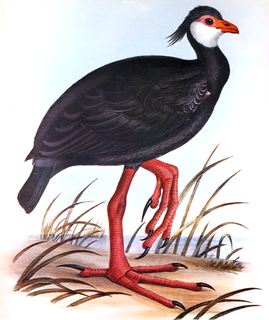
George Robert Gray FRS was an English zoologist and author, and head of the ornithological section of the British Museum, now the Natural History Museum, in London for forty-one years. He was the younger brother of the zoologist John Edward Gray and the son of the botanist Samuel Frederick Gray.

John Obadiah Westwood was an English entomologist and archaeologist also noted for his artistic talents. He published several illustrated works on insects and antiquities. He was among the first entomologists with an academic position at Oxford University. He was a natural theologian, staunchly anti-Darwinian, and sometimes adopted a quinarian viewpoint. Although he never travelled widely, he described species from around the world on the basis of specimens, especially of the larger, curious, and colourful species, obtained by naturalists and collectors in England.
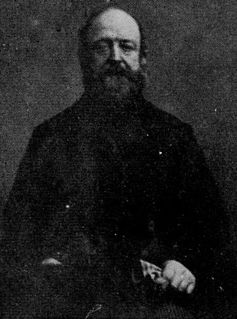
James Francis Stephens was an English entomologist and naturalist. He is known for his 12 volume Illustrations of British Entomology (1846) and the Manual of British Beetles (1839).

William Kirby was an English entomologist, an original member of the Linnean Society and a Fellow of the Royal Society, as well as a country rector, so that he was an eminent example of the "parson-naturalist". The four-volume Introduction to Entomology, co-written with William Spence, was widely influential.
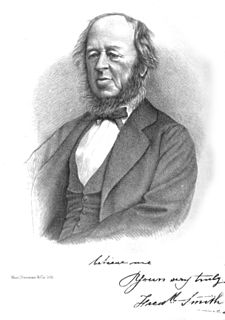
Frederick Smith was a British entomologist who worked at the zoology department of the British Museum from 1849, specialising in the Hymenoptera.

Henry Tibbats Stainton was an English entomologist. He served as an editor for two popular entomology periodicals of his period, The Entomologist's Annual and The Entomologist's Weekly Intelligencer.

John Curtis was an English entomologist and illustrator.

Francis Walker was an English entomologist. He was born in Southgate, London, on 31 July 1809 and died at Wanstead, England on 5 October 1874. He was one of the most prolific authors in entomology, and stirred controversy during his later life as his publications resulted in a huge number of junior synonyms.
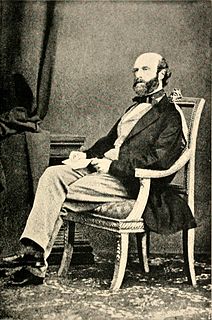
Alexander Henry Haliday was an Irish entomologist. He is primarily known for his work on Hymenoptera, Diptera, and Thysanoptera, but worked on all insect orders and on many aspects of entomology.
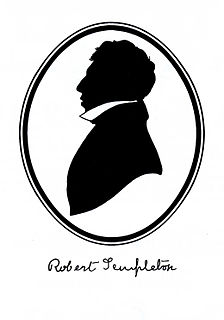
Robert Templeton was a naturalist, artist, and entomologist, and was born at Cranmore House, Belfast, Ireland.

William Sharp Macleay or McLeay was a British civil servant and entomologist. He was a prominent promoter of the Quinarian system of classification.

The Royal Entomological Society is devoted to the study of insects. Its aims are to disseminate information about insects and improving communication between entomologists.

Frederick William Hope was an English clergyman, naturalist, collector, and entomologist, who founded a professorship at the University of Oxford to which he gave his entire collections of insects in 1849. He described numerous species and was a founder of the Entomological Society of London in 1833 along with John Obadiah Westwood.
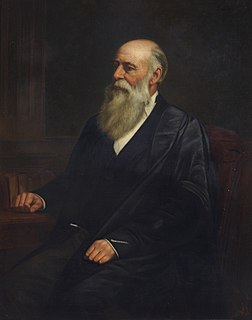
Charles Cardale Babington was an English botanist and archaeologist. He was elected a Fellow of the Royal Society in 1851. Babington was the son of Joseph Babington and Cathérine née Whitter, and a nephew of Thomas Babington Macaulay. He was educated at Charterhouse and St John's College, Cambridge, obtaining his Bachelor of Arts in 1830 and his Master of Arts in 1833. He overlapped at Cambridge with Charles Darwin, and in 1829 they argued over who should have the pick of beetle specimens from a local dealer. He obtained the chair of botany at the University of Cambridge in 1861 and wrote several papers on insects. He married Anna Maria Walker on 3 April 1866.

Adam White was a Scottish zoologist.

James John Joicey FES was an English amateur entomologist, who assembled an extensive collection of Lepidoptera in his private research museum, called the Hill Museum, in Witley, Surrey. His collection, 40 years in the making, was considered to have been the second largest in the world held privately and to have numbered over 1.5 million specimens. Joicey was a fellow of the Zoological Society of London, the Royal Geographical Society, the Royal Entomological Society, the Royal Horticultural Society, and the Linnean Society of London.



















